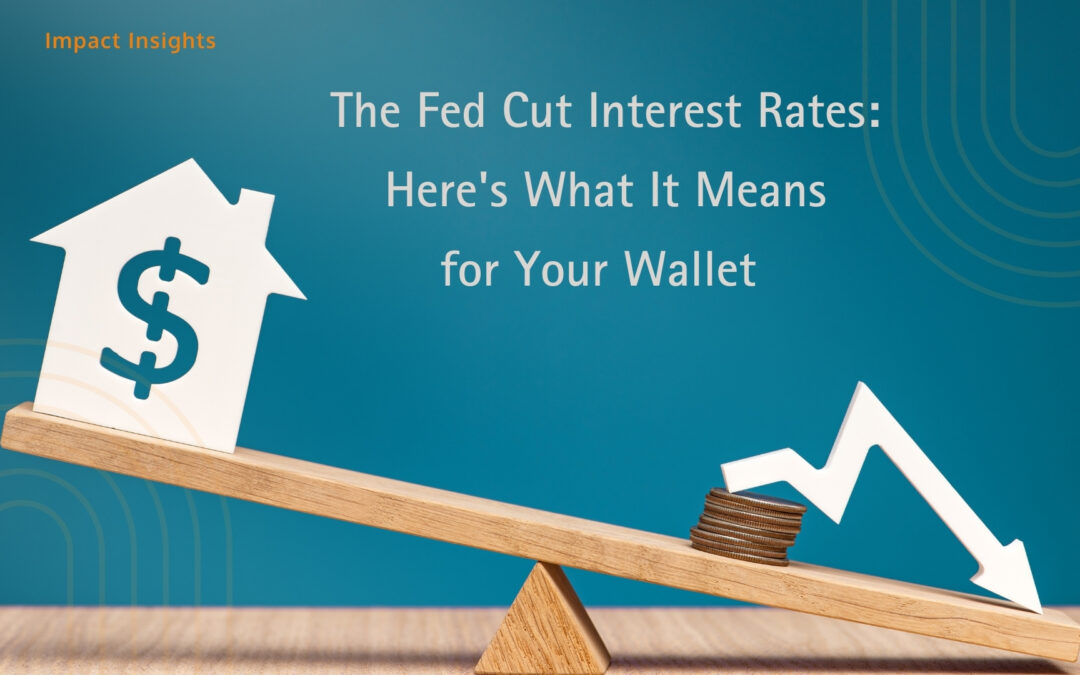
After years of elevated rates, aimed at controlling inflation, the Federal Reserve has made a significant policy shift by cutting interest rates for the first time since 2020. This decision will have widespread effects on borrowing, savings, and investment, marking a turning point for both consumers and businesses alike.
How Interest Rates Work and Why They Matter
The Federal Reserve controls the federal funds rate, which is the interest rate banks charge each other for overnight loans. However, this rate doesn’t just impact banks—it influences borrowing costs across the entire economy. When rates are low, it becomes cheaper for businesses to borrow money, invest in growth, and hire more workers, which stimulates the economy.
During the COVID-19 pandemic, the Fed cut interest rates to nearly zero to support an economic recovery. Businesses were closing, and supply chains were disrupted, so lowering rates allowed businesses and individuals to access credit. This helped fuel economic growth, but as the recovery gained steam, inflation began to rise. To combat inflation, the Fed raised rates aggressively, leading to the high borrowing costs we’ve seen in recent years.
While inflation has dropped from a high of 9.1% in June 2022 to 2.5% in August 2024, some parts of the economy are still feeling the inflation impacts specifically groceries and home prices. But, with inflation starting to ease, the Fed is confident that the economy can handle lower rates.
A 50 Basis Point Cut: What You Need to Know
In September the Federal Reserve cut the federal funds rate by 50 basis points, reducing the range from 5.25% – 5.5% to 4.75% – 5%. This marked the first rate cut since March 2020, following several years of increasing rates. The consensus had been split between a 25 and 50 basis-point cut, but the more aggressive move signals the Fed’s commitment to supporting economic growth as inflation pressures ease.
What Does the Fed’s Rate Cut Mean for You?
While the Fed officially controls the federal funds rate, its actions affect a wide range of borrowing costs. Here’s how the rate cut could impact your personal finances:
1. Mortgages
If you’re in the market for a home, this rate cut could be good news. Lower rates mean it costs less to borrow. Mortgage rates, which are closely tied to government bond yields, may continue their downward trend. Following the rate cut, mortgage rates on 30-year fixed loans hit a 19-month low of 6.2%. If the Fed continues to cut rates further, it could push rates even lower.
2. Car Loans and Variable Rate Consumer Debt
Borrowing costs for auto loans and other types of debt will likely decrease, making it less expensive to finance big purchases like cars. For those managing existing debt, like private student loans, home equity lines of credit, or credit card debt, any reduction could help alleviate the financial burden on consumers.
3. Savings Accounts
While borrowers benefit from lower rates, savers could see less favorable returns. High-yield savings accounts, certificates of deposit (CDs), and money market funds, which have provided strong returns recently, will be impacted by declining yields because of the Fed’s actions. This means that your savings may not grow as quickly as they did during the high-rate period.
High-yield savings accounts have seemed like a sweet deal in recent years, but with lower rates, you want to be mindful of how much you put into a savings account. Holding too much cash means missing out on long-term returns. This makes it a good time to review your financial plan to determine if you should be investing some of your cash more aggressively.
4. Job Market and Business Borrowing
Businesses often rely on loans to finance growth, and lower rates make it easier and cheaper to borrow. This can lead to more hiring and investment in expansion, potentially boosting the job market.
5. Stock Market Impact
Although the relationship between interest rates and the stock market is indirect, the two often move in opposite directions. Lower interest rates often encourage investment in the stock market. As yields on bonds and savings accounts decline, investors typically seek higher returns in stocks. At the same time, lower interest rates can stimulate spending and investment from both consumers and businesses, improving corporate earnings and driving stock prices upward. While interest rates play a significant role in stock market performance, they are just one of many factors that influence market movements.
What’s Next for Interest Rates?
While this rate cut may be the first of several, Fed Chairman Jerome Powell has expressed caution. During a press conference, he emphasized that the economy remains in “good shape,” and future cuts will depend on ongoing economic conditions. The consensus was that the Fed may cut rates by another 50 basis points later this year, with further reductions likely in 2025. However, the strong jobs report released this past Friday may result in the Fed taking a more cautious approach. There is also a tremendous amount of uncertainty regarding the election. The candidates have very different approaches to things like tariffs and isolationism – both of which could drive inflation up in a meaningful way. As a result, the Fed may take a “go slow” approach to not have to reverse course and raise interest rates again. There are two more Fed meetings this year —one in early November and one in mid-December- so we will have more answers soon.
The Big Picture
Although the Fed has begun cutting rates, it’s unlikely we’ll return to the low rates of recent years. Barring further inflation pressures, the Fed expects the federal funds rate to settle around 2.9% in the long term—significantly higher than the historically low rates seen from 2008 to 2022.
As rates evolve, it’s important to stay informed and understand how these changes may impact your financial goals, whether you’re saving, borrowing, or investing.
Reach out to see how we can help!

About the Author
Samantha Vicchiarelli, ChFC®
Samantha’s journey into financial planning was inspired by her own personal experience of unexpectedly becoming a caregiver for an aging parent. Faced with the task of managing financial decisions without proper guidance, she felt compelled to channel her insights into assisting others facing similar challenges, providing them with the guidance and resources needed for peace of mind.

